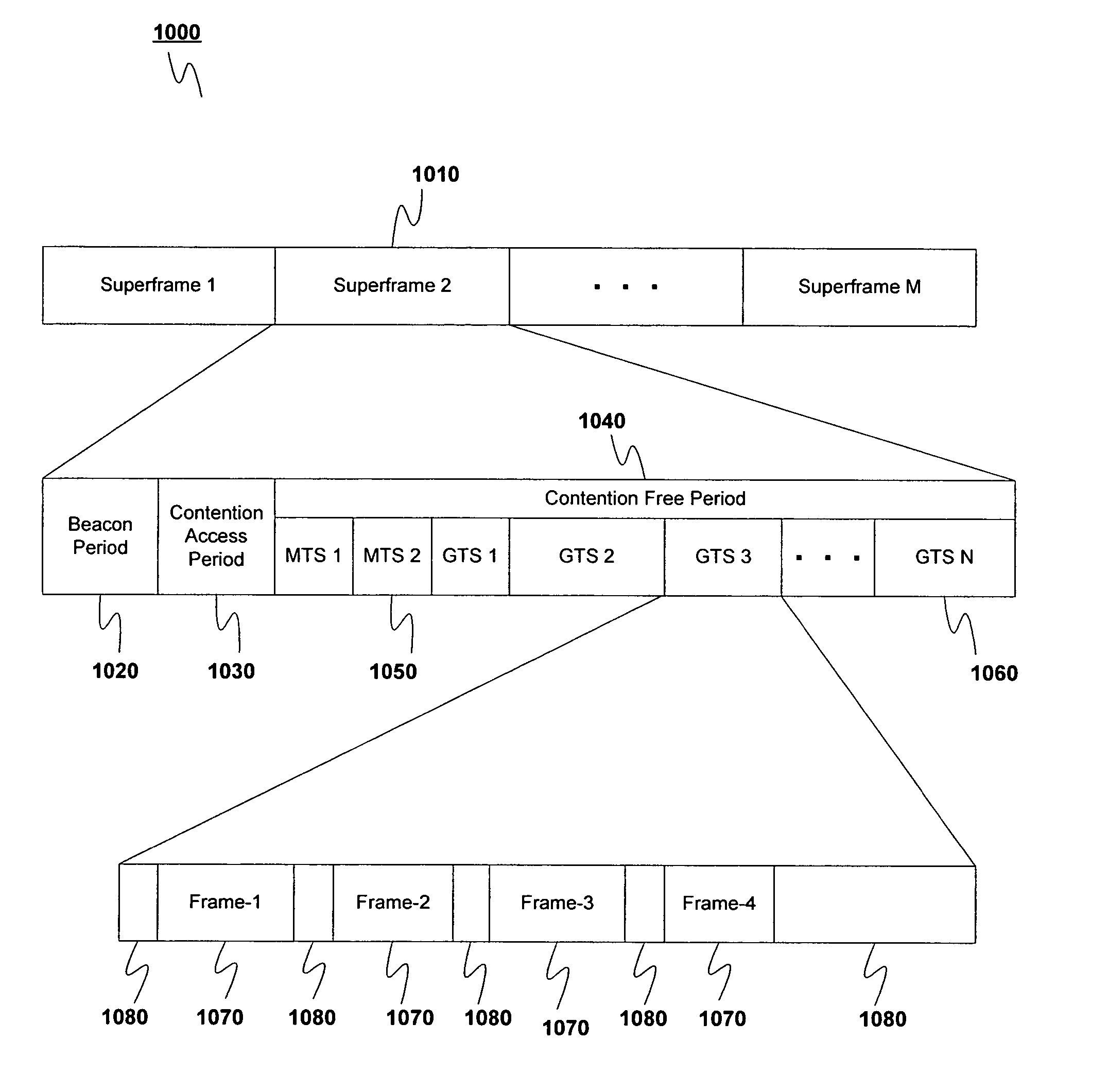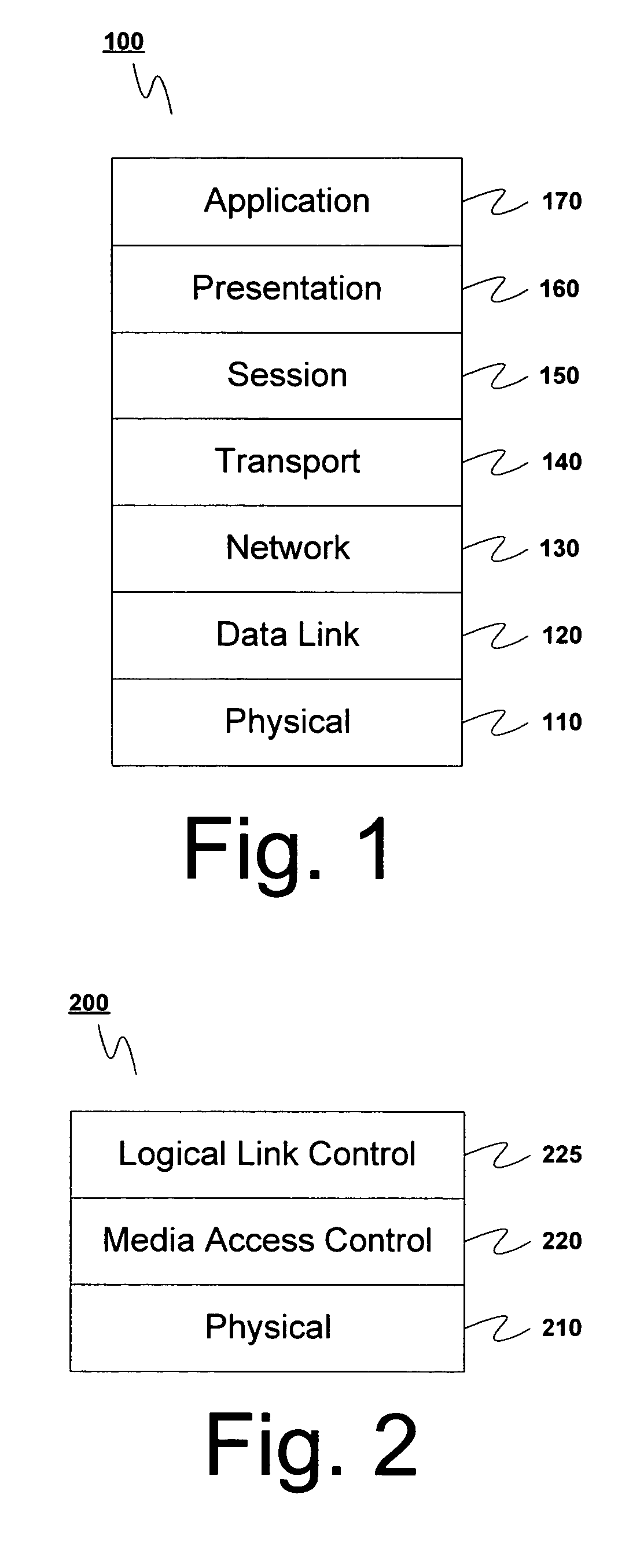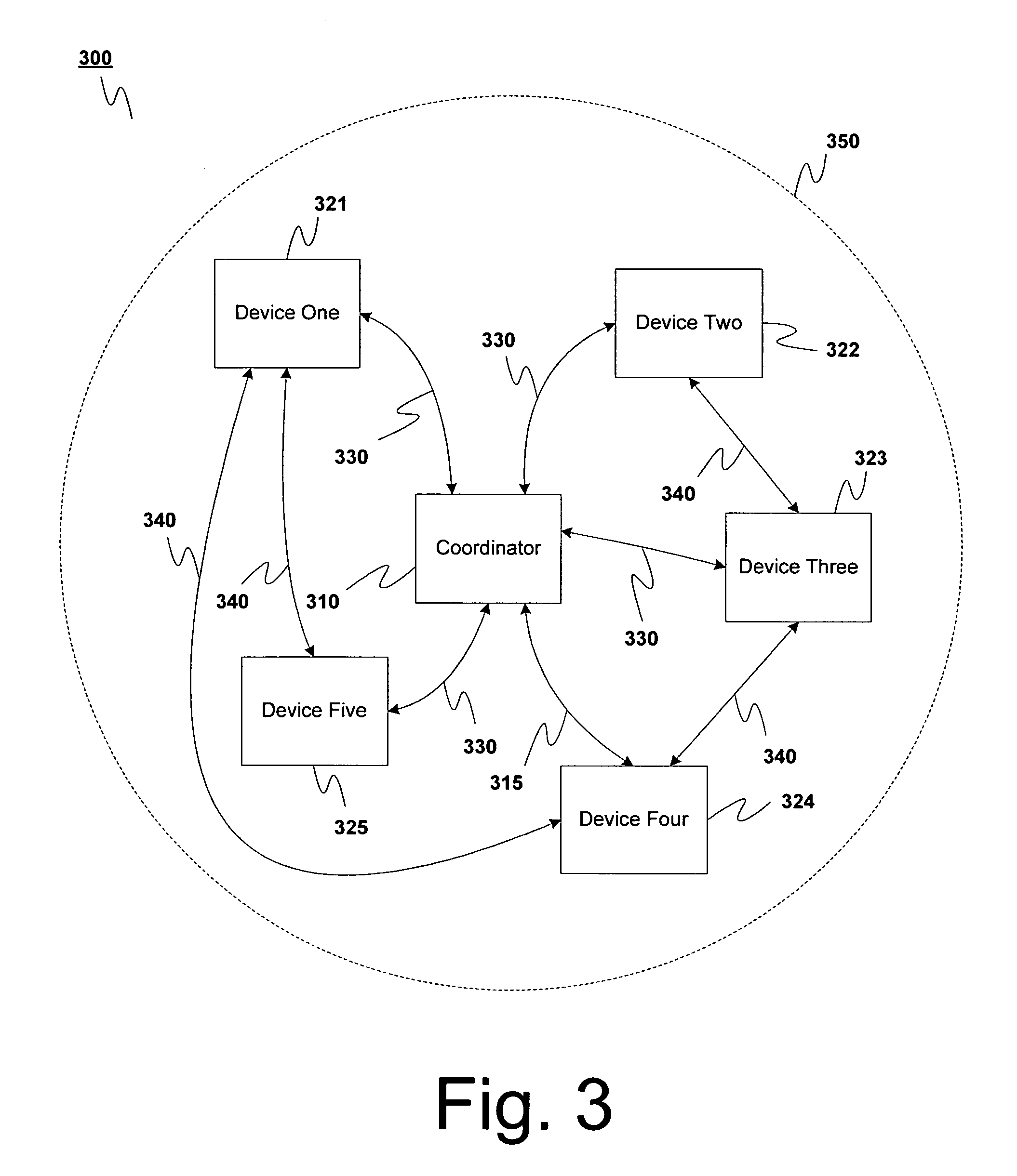Method for controlling a data stream in a wireless network
a wireless network and data stream technology, applied in the field of wireless personal area networks and wireless local area networks, to achieve the effect of increasing the data throughput speed of a wireless network and reducing the amount of dead tim
- Summary
- Abstract
- Description
- Claims
- Application Information
AI Technical Summary
Benefits of technology
Problems solved by technology
Method used
Image
Examples
first preferred embodiment
[0110]As shown in FIG. 9, the transmission scheme 900 involves dividing the available transmission time into a plurality of superframes 910. This embodiment uses the MAC header 622 disclosed in FIG. 7A and the payloads 640 disclosed in FIGS. 8A through 8H.
[0111]In this embodiment each individual superframe 910 includes a beacon frame 920, an uplink MTS 930, a plurality of GTSs 940, and a downlink MTS 950.
[0112]The beacon frame 920 is a frame 600 whose payload 640 is a beacon payload 880, as shown in FIG. 8H. It indicates by association ID (known as a device ID in the IEEE 802.15.3 draft standard) a device 321–325 that is assigned to the current superframe 910. It also indicates via the RxTx table 888 [FIX THIS?] the transmitter / receiver pairs that are assigned to the individual GTSs 940.
[0113]In an alternate embodiment, a stream index may be added to allow multiple streaming between the same source-destination pair. This can be shown, for example, in the CTA for the draft 802.15.3 s...
second preferred embodiment
[0119]As shown in FIG. 10, the transmission scheme 1000 involves dividing the available transmission time into a plurality of superframes 1010. This embodiment uses the MAC header 624 disclosed in FIG. 7B. The payloads 640 used are preferably those used in the IEEE 802.15.3 standard.
[0120]In this embodiment the data transmission scheme 1000 includes transmitting successive superframes 1010 in time across the network 300. Each superframe 1010 includes a beacon 1020, an optional contention access period (CAP) 1030, and a contention free period (CFP) 1040. The contention free period 1040 may include one or more management time slots (MTSs) 1050 and one or more guaranteed time slots (GTSs) 1060.
[0121]Management time slots 1050 can be downlink management time slots (DMTSs) in which information is sent from the coordinator 310 to a non-coordinator device 321–325, or uplink management time slots (UMTSs) in which information is sent from a non-coordinator device 321–325 to the coordinator 3...
PUM
 Login to View More
Login to View More Abstract
Description
Claims
Application Information
 Login to View More
Login to View More - R&D
- Intellectual Property
- Life Sciences
- Materials
- Tech Scout
- Unparalleled Data Quality
- Higher Quality Content
- 60% Fewer Hallucinations
Browse by: Latest US Patents, China's latest patents, Technical Efficacy Thesaurus, Application Domain, Technology Topic, Popular Technical Reports.
© 2025 PatSnap. All rights reserved.Legal|Privacy policy|Modern Slavery Act Transparency Statement|Sitemap|About US| Contact US: help@patsnap.com



